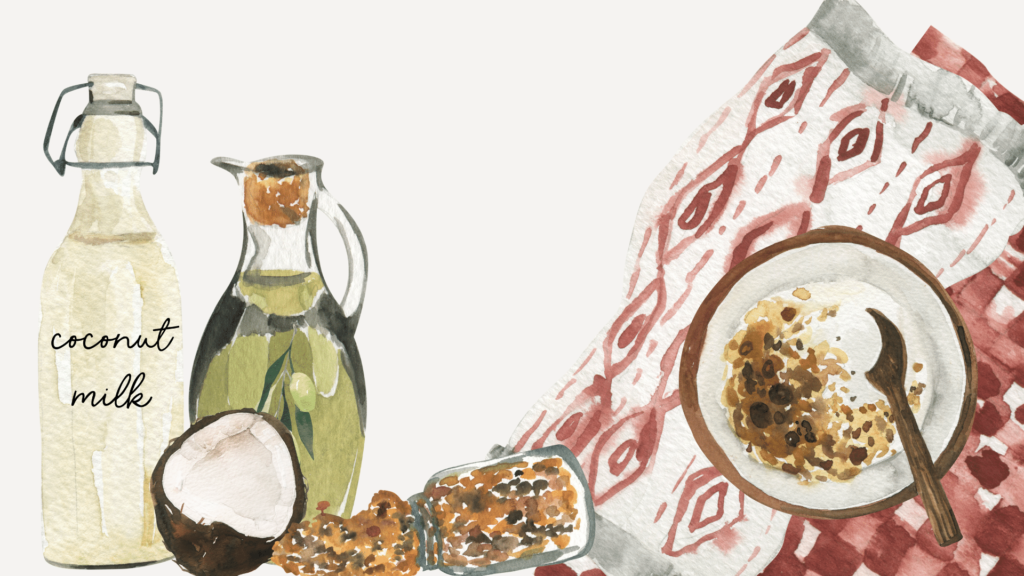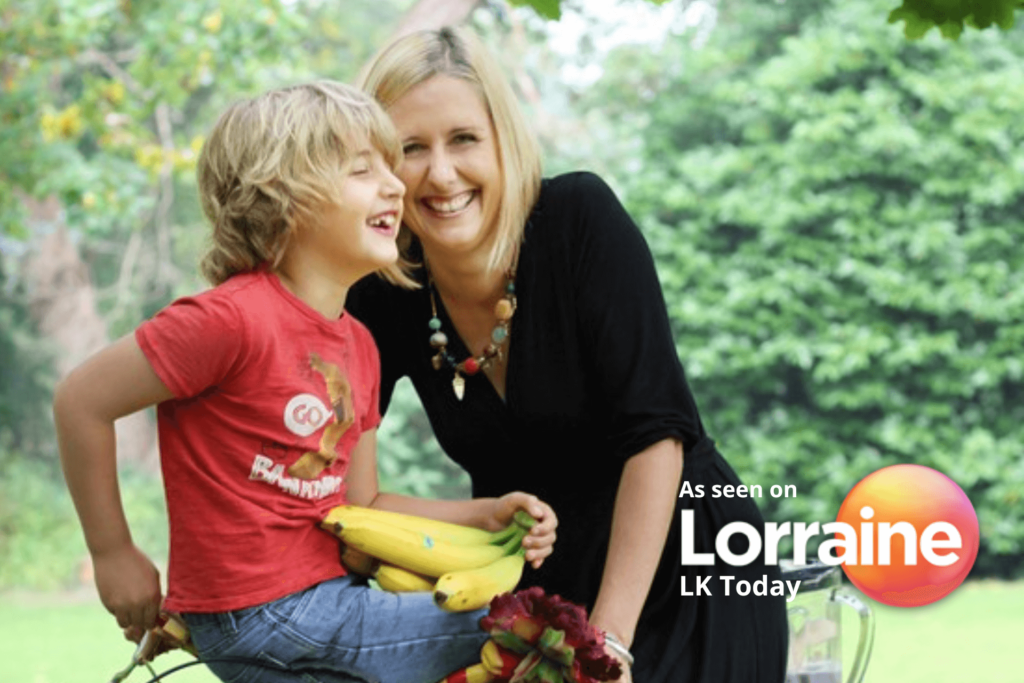If you tell people you are embarking on a vegetarian diet and especially if you are also avoiding eggs and dairy as a vegan, the concerns you will often be confronted with are: “How will you get your calcium? What about your bones? Are you not likely to become anaemic? What about vitamin B12?” Although these are vitally important, many of the concerns are misconceptions rather than based on fact, and others can be overcome with the benefit of knowledge.
Where peoples’ diets often fall down is much more basic, and we tend to neglect to get the building blocks right first.
Below we go through the basics of a healthy diet, proteins, carbohydrates and fats, which ones to choose and how to put them together. Also discussed is which vitamins and minerals are the ones to watch as vegetables sources may not be so readily available. For more detailed information on sources of all the nutrients needed in a healthy diet, see our Vegan cookbook, which includes a comprehensive list of key vegetarian nutrients and their food sources.
Proteins
Why we need them
Proteins are vital for growth and repair and for regulating most body functions via enzymes, hormones, neurotransmitters and immune cells.
Protein building
Proteins need to be produced in the body everyday to carry out the maintenance and repair which is constantly needed. Proteins are made up of amino acid building blocks. Some of these amino acids are released from the protein that we eat by the process of digestion. Others are made in the body from the amino acids that we take in via our diet. There are 22 known amino acids, 8 (10 in children) of which are defined as ‘essential’ as they cannot be made by the body and need to be obtained from the diet. The rest can be made by the body from the essential 8.
Ensuring protein quality
Protein production is limited by the availability of the amino acid building blocks. The proteins we eat are made up of different combinations of amino acids and so tend to be spit into 2 groups, ‘complete’ proteins which have good levels of all 8 essential amino acids, and ‘incomplete’ which have one or more missing. The amino acid which is missing, or only present in very small amounts, is the one that prevents or limits the body’s ability to produce usable protein.
Animal foods such as meat, fish, eggs, and dairy are known as complete or quality proteins as they are good sources of all the essential amino acids. Some plant-based proteins also contain all the essential amino acids, and some are complete proteins, see below.
This is not to say that ‘incomplete’ plant proteins cannot be used. Protein combining can overcome this shortfall. Combining foods to ensure all the building blocks are in place not only ensures sufficient usable protein but also helps us to have a varied diet, which is vital for optimal health. Another major benefit of getting your proteins from plant sources is that animal protein sources are often attached to saturated fats, which are detrimental to health. Animal proteins are also more ‘acid forming’ in the body and can leach alkaline buffers such as calcium out of the bones, increasing the likelihood of health problems such as osteoporosis.
How much do we need?
Protein requirements depend on a number of factors and increase during pregnancy when breastfeeding and with age (in growing children) and activity level. The ideal average adult protein intake should make up around 20% of the diet, and a varied vegetarian or vegan diet can easily accommodate this.
Sources of ‘Complete’ plant-based proteins
- Soya beans & products e.g. soya milk, tofu, tempeh
- Hemp
- Quinoa
- Amaranth
- Buckwheat
- Micro algae such as chlorella & spirulina
Vegetarian sources of animal proteins
- Free range eggs
- Dairy products
Although these are good protein sources, dairy products can also be high in saturated fats and as animal proteins, they are acid-forming in the body. For optimal health, avoid relying on these and include complete & combined plant proteins in your diet.
Protein Combining
Combine your proteins from any 2 of these 3 groups, examples are listed
| Whole Grains | Nuts & Seeds | Legumes |
| Brown rice | Sunflower, sesame, hemp & pumpkin seeds | Chickpeas |
| Barley | Seed spouts | Lentils |
| Corn | Almonds | Peas |
| Millet | Walnuts | Black eye beans |
| Oats | Cashew nuts | Kidney beans |
| Wholegrain pasta | Nut butter | Bean sprouts |
| Wholegrain bread |
Examples of complete protein combination examples
- Beans on wholegrain toast
- Rice or millet with vegetable & bean curry
- Chickpea houmous on rye cracker
- Stir-fry or steamed veg with rice noodles & cashew nuts
Remember: Although combining your plant proteins within a 48-hour period is sufficient for the body to put them together if you combine within a meal, it is it easier to remember and ensure protein quality, and you can increase protein usability by 30%. Many traditional food combinations, which have been staples in cultures with vegetarian diets, such as rice and lentils and bean & tortillas, naturally combine all the essential amino acids.
Carbohydrates
Vegetarians and vegans often over-rely on white pasta or white rice with tomato based sauces as quick staple meals. Not only are such meals potentially low in protein, but they are also high in refined carbohydrates which are nutrient-depleted and not good for sustained energy levels. It is often forgotten that fruit and vegetables are carbohydrates too, and these carbs lead to many of the health benefits associated with animal-free diets.
Why we need them
Carbohydrates are the body’s main fuel providers. Complex carbohydrates in food are made up of ‘sugars’ and fibre. Fibre does not provide an energy source but benefits health by supporting the digestive system and helping eliminate wastes and toxins from the body.
Where we get them
Sweet carbohydrate foods such as sugar, confectionary, honey, and to a lesser extent sweet fruits such as bananas and dried fruits, quickly break down in the body, releasing their sugars. The same is also true of ‘white’ refined foods that have had the fibre and nutrients stripped away, e.g. white bread, pasta and rice. These foods can lead to energy highs and lows, fatigue, weight gain and many associated health problems. Complex carbohydrates such as wholemeal bread, wholegrain pasta, brown rice, fruit and vegetables still have the fibre and nutrients intact and provide the body with a steady release of energy.
How much do we need?
Carbohydrates form the staple diet in much of the world. The problem is not necessarily the quantity consumed but the quality. This has led to the UK government’s focus on promoting the importance of a minimum of ‘5 a day’ portions of fruit and vegetables, a target unfortunately not reached by the majority of the UK population. Ensure that the majority of your carbohydrate intake is from vegetables, fruit and whole grain products, rather than nutrient-depleted, refined ‘white’ foods.
The ideal average adult carbohydrate intake would make up around 65% of the vegetarian diet, with 50% of the daily intake coming from nutrient-rich fruit and vegetables and 15% from whole grains (this is in addition to those included as protein combinations). Include a wide variety and different colours of fruit and especially vegetables as each colour and type has a different range of nutrients, see the list of the top 100 foods in The Food Doctor Healing Foods for Mind and Body, and Vegan for suggestions.
Fats
Vegetarians and vegans (and everyone else!) often have an unhealthy imbalance of fats in their diets and that includes the balance of good fats. In reaction to promotion of the health benefits of polyunsaturated fats such as sunflower oil we have dramatically increased our intake, both at home and in food manufacturing, resulting in an imbalance of good fats which can actually be detrimental to our health.
Why we need them
Fats are a rich source of energy, they carry flavours and fat-soluble vitamins, they help us to feel full and satisfied after meals, and they provide insulation and protect the delicate organs. In addition to these functions, the essential fats have a vast range of functions and play a role in many body processes.
Where we get them
Dietary fats can be split into two main groups, saturated and unsaturated fats, and the functions in the body depend on the types of fats present. Foods usually contain a combination of these fats; animal products such as meat and dairy are higher in the saturated fats, whereas the fats in plant foods tend to be predominantly unsaturated (except for the tropical fats such as coconut and palm).
Saturated fats do not need to be obtained from the diet as they can be made by the body. They tend to be solid at room and body temperature, making them potentially damaging and increasing the risk of cardiovascular disease and type 2 diabetes.
Unsaturated fats include monounsaturated and polyunsaturated fats, the more unsaturated they are the more delicate and unstable, and the more functions they have in the body. These fats are liquid at room and body temperature. Some of the polyunsaturated fats are known as essential fats as they can only be made by plants and cannot be made by the body, yet are essential for health. Two of the key families of essential fats are the omega 3 family and the omega 6 family. These families compete for enzymes which convert them and need to be balanced in the diet. The essential fat families have a vast range of functions in the body and are needed for the nervous system, hormones, skin and brain function. Omega 3 fats are especially important in pregnancy and breast-feeding for both the mother and the developing baby.
The delicate polyunsaturated fats are easily damaged and turned into solid trans fats, which behave like saturated fats in the body, but are even more damaging. These fats are formed via heating to high temperatures and by food processing such as hydrogenation. Exposure to light and oxygen can also damage the healthy polyunsaturated fats so storage is also important. Although the solid saturated fats are not recommended for health, if fats are going to be heated as in cooking, they are preferable to the delicate unsaturated fats as they are more stable and less susceptible to damage. Olive oil is generally recommended for cooking, as it is monounsaturated, and so reasonably stable. Cold pressed olive oil also has other healthy properties and is beneficial to health if used cold.
Buying, storing and using fats
- Buying
Buy delicate unsaturated fats such as sesame, and monounsaturated such as olive oil in dark glass bottles which protect the oils from light. Chose cold pressed ‘virgin’ oils which are less processed. Buy in small quantities to maintain freshness. Buy the highly unsaturated oils such as flax and hemp from health stores which store them refrigerated.
- Storing
Store unsaturated fats cool & dark, ideally in the fridge.
- Using
Don’t heat unsaturated fats but use cold as salad dressings or drizzled over cooked foods. Use mono-unsaturated or saturated fats when cooking. Olive or avocado oil is fine for frying but keep the temperature below 200°C, if the oil starts to smoke it is too hot. When frying, try adding a little water or sauce to the oil to lower the temperature, put a lid on and ‘steam fry’. Coconut oil is good for baking. Avoid hydrogenated margarines, have butter if vegetarian and non-hydrogenated margarine if vegan.
How much do we need?
Meat eaters tend to consume too much saturated fat from meat and dairy, which not only has implications for heart disease and certain cancers, but also blocks the body’s use of essential fats. Although vegetarian and especially vegan diets have been shown to be lower in saturated fats, they also tend to have lower levels of omega 3 fats than those who eat fish. Most western diets also tend to be too high in omega 6 compared to 3 fats. About 15% of the diet should be made up of essential fats.

Boost your omega 3 – get the balance right
- Include flax seeds (2 tablespoons) or oil (1 tablespoon) each day
- Avoid saturated fats; dairy products, excess coconut & palm oil
- Avoid processed foods as they tend to have saturated, trans or hydrogenated fats
- Avoid excess omega 6 intake: processed foods & sunflower oil
- Ensure sufficient intake of omega 3 co-factors: vitamins B3, B6, biotin and C, and minerals calcium, magnesium and zinc.
See also vegan & vegetarian sources of vegetarian DHA and EPA
Vitamins & minerals
Although an animal-free diet can include all the necessary nutrients for optimal health (with the one exception of B12), the diet does need to be varied and include the foods which will provide these, simply taking out the meat, and in some cases dairy and not ensuing nutrient intake from other sources is not a recipe for success! Vegan gives food sources of all the nutrients needed, take a look through these and see which delicious foods you could be adding into your diet to ensure variety and health. The nutrients listed below have been found to be lacking in studies of people following vegetarian or vegan diets, not necessarily through lack of availability of nutrients but often through lack of knowledge of the food sources.
Calcium and vitamin D
The truth about dairy – Perhaps the most common misconception is that we need to have dairy in our diets to ensure sufficient calcium for bone health. Although dairy products are a good source of calcium, they are not such a good source of magnesium and this is needed for the body to utilise calcium properly and make strong bones. Animal protein (including dairy) is also acid-forming in the body, and so alkali minerals such as calcium are used from the body to help buffer this acidity.
Some dairy products are also high in saturated fats, which are also detrimental to health. When changing to a vegetarian diet it is often all too easy to increase dairy products, especially cheese, as this is often the alternative offered when we eat out or buy lunchtime sandwiches. People on vegan diets have however been shown to have lower intake of vitamin D and this is needed for calcium absorption. The majority of vitamin D in the body is created by a chemical reaction which starts with sunlight on the skin, so to ensuring some time is spent outdoors each day is vital.
Many dairy-free milks and margarines are fortified with vitamin D, but check that the margarines are also free from hydrogenated fats.
Food Sources of Calcium
Brazil nuts, chickpeas, dried seaweeds, figs, green leafy vegetables, parsley, watercress, broccoli, tofu, fortified soya milks, okra, blackstrap molasses, swede, almonds, quinoa & apples.
Vitamin B2 (riboflavin) Needed for energy production, skin, hair and nails.
Good food sources include: mushrooms, green leafy vegetables, watercress, cabbage, broccoli, pumpkin, bean sprouts, bamboo shoots, tomatoes, soya products, wheat germ, yeast extract and almonds.
Vitamin B12 (cobalamin)
Needed for energy production, nervous system, prevention of pernicious anaemia, blood cell formation, heart health (via homocysteine regulation) and for protein utilisation.
Vitamin B12 is made by bacteria in the gut and so is usually found in soil or water where it has been deposited! Vitamin B12 is not found in plant foods unless they are contaminated with micro-organisms from the soil or water. Modern processing and the fact that we (wisely) wash vegetables at home have virtually eliminated this as a source of B12. Some foods are fortified with B12 e.g. soya milks, soya burgers and mince, breakfast cereals, yeast extract and non-hydrogenated margarines. Many of these foods are however processed and may be low on nutrients so top up your B12 stores with a weekly supplement. B12 needs to be taken in sub-lingual (under the tongue) form or chewed to maximise absorption.
There is no neccesity to supplement daily as the body can store B12 in the liver, in fact deficiency signs may take years to show as the storage is so efficient, so don’t over do it either! It is possible that algae (chlorella) may provide usable true vitamin B12 but the jury is still out on this and we eagerly await more large studies.
Zinc
Needed for growth, hormone function, fertility, liver function, immunity, taste, protein digestion and skin health.
Zinc from plant foods is less absorbable than from meat and fish, so extra care needs to be taken to ensure sufficient food sources. Phytates in grains can further reduce mineral absorption. Wheat bran is particularly high in phytates and should be avoided as an additional fibre source, instead have soaked oats or porridge to provide fibre and support bowel regularity.
Good food sources include: dried seaweed, pumpkin, sesame & sunflower seeds, pine nuts, whole grains, wholemeal bread, brown rice, lentils, almonds, wheat germ and oats.
Selenium
Needed for antioxidant properties, thyroid function and to protect against heart disease and certain cancers.
Good food sources include: Brazil nuts, mushrooms, dried mushrooms, lentils, sesame & sunflower seeds, walnuts, whole grains, potatoes, acorn squash and avocado.
Selenium levels are dependant on soil levels so we are all at risk of reduced levels. Eating organically grown foods can help ensure sufficient levels.
Iodine
Needed for normal functioning of the thyroid gland which controls metabolism.
Good food sources include: seaweed, organic green leafy vegetables, watercress, pears and wild rice.
Iron deficiency and anaemia
Although it is commonly believed that vegetarians and vegans will be more likely to suffer from iron deficiency and anaemia, studies have in actual fact shown that they are no more likely than anyone else (studies show that many people suffer from iron deficiency – including meat eaters). Iron from meat is more easily absorbed by the body than from vegetable sources but this is not always beneficial. Storing too much iron in the body can lead to an increased risk of diabetes, heart disease and colon cancer. Although storage of animal iron is generally the same, vegetable iron absorption reduces as the body stores increase so overdoing it is unlikely.
Maintaining sufficient stores of iron is of course, essential and certain plant foods can decrease and enhance absorption. Phytates from seeds and grains, and polyphenols from tea and coffee can reduce vegetable iron absorption but having vitamin C-rich foods with iron-rich foods can help overcome this. Reviews of vegan diets have shown them to be on average 3-5 times higher in vitamin C intake. Soya and cows milk protein and eggs can also inhibit vegetable iron absorption so at times of increased need (e.g. in women with heavy periods or in pregnancy) it may help to reduce these in the diet. Calcium can also inhibit iron absorption so if you need to top up your iron and also your calcium stores, taking supplements separately, e.g. having calcium before bed can help keep both of these nutrients maximised.
Food Sources of Iron
Seaweeds, dried apricots, wholemeal bread, raisins, prunes, dates, sesame & pumpkin seeds, legumes, nuts, dark-green leafy veg, spinach, cabbage, tofu, beans & pulses, wheat-germ, parsley, millet, blackstrap molasses, quinoa.
Food Sources of Vitamin C
Citrus fruits, green vegetables, broccoli, cabbage, cauliflower, kale, peas, berries, currants, lettuce, red, green & yellow peppers, potatoes, tomatoes, sprouted alfalfa seeds, parsley, tropical fruits: guavas, mangoes, kiwi fruit, pineapple.
Phyto-nutrients
There are of course, many other phytonutrients (plant nutrients) and ensuring a diet rich in variety and based on whole, preferably organic foods would help ensure intake of these and aid nutrient absorption via the naturally synergistic way nutrients that work well together are naturally found together in plant foods.
Share with a friend



